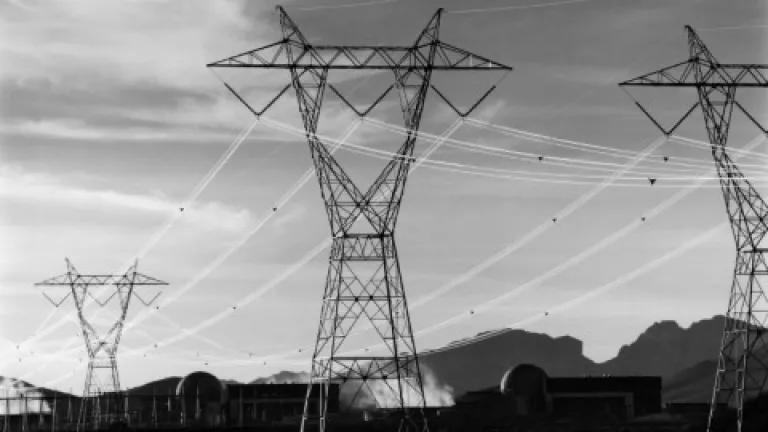
America’s utilities have become the most important investors in smarter energy use, helping all of us reduce our bills, and NRDC’s advocacy over the past year helped achieve major gains in both delivered results and the regulatory reforms needed to sustain them.
These energy efficiency initiatives are part of an integrated strategy that also includes regular upgrades to energy efficiency appliance and building standards at federal and state levels, which my colleagues Meg Waltner and Lara Ettenson chronicle elsewhere on Switchboard.
According to the Institution for Electric Innovation, U.S. electric utility investment in efficiency programs, such as weatherization and rebates to highly efficient appliances, continues on an upward path and reached close to $7 billion in 2013 (the latest available figures). The average growth rate for electricity consumption remains well below that for the nation’s population, as discussed in my recent New York Times op-ed. The news isn’t all good; Florida’s Public Service Commission adopted significant energy efficiency program cutbacks late in the year. But the vote was 3 – 2, and one of the eloquent dissenters was the incoming president of the National Association of Regulatory Utility Commissioners, Lisa Edgar. She won’t give up, and neither will we.
Utility regulatory reform successes that support efficiency
An NRDC priority is to persuade state utility commissions to adopt a policy called “revenue decoupling,” which prevents reductions in sales of electricity and natural gas from inflicting financial harm on the utilities themselves (although it doesn’t guarantee utility profits or increase their authorized costs). This means that when their customers do the right thing and use less energy, the utilities still can recover their authorized costs for grid maintenance and modernization, which helps remove a disincentive for the utilities to invest in programs to help customers optimize their energy use. That’s good for utilities and better for their customers, who are the principal beneficiaries from inexpensive energy efficiency improvements.
The year brought new decoupling orders in Minnesota (Centerpoint), Maine (Central Maine Power) and Washington (Avista) and new commitments to support revenue decoupling by Xcel (for its Minnesota and Colorado service territories) Public Service of New Mexico, and PSEG (for its Long Island service territory). Montana’s NorthWestern Energy filed testimony in December urging its state utility commission to reenact decoupling after an extended hiatus unrelated to the merits of the policy. And for the first time, the Nevada Public Service Commission formally invited proposals for electric utility decoupling.
For electric and natural gas utilities, the decoupling count now stands at 32 and 55, respectively; the overall number of state adopters has reached 17 for electric utilities and 22 for natural gas utilities. Those numbers represent more than a doubling of adoptions over the past seven years. Another way of seeing the cumulative impact of this campaign is to calculate the nationwide fraction of electric and natural gas utility revenues now subject to revenue decoupling: 23 percent and 38 percent, respectively, for investor-owned utilities. For public power utilities, the figure is 6 percent (for electricity revenues), which is better than the zero figure of two years ago but not nearly good enough. There is plenty of room for improvement in all sectors, but the trend is clearly positive and NRDC will be redoubling its efforts in the year ahead.
At the risk of waxing poetic, courtesy of Arthur Hugh Clough: “Say not the struggle nought availeth!” For, as Clough concludes: “In front the sun climbs slow, how slowly! But westward, look, the land is bright!”
